On this day, 135 years ago, on the 20th of December 1887, the excavation of the Kabireion near Thebes in Boetia started by members of the DAI Athens and travel grant holders of the DAI. Little did they know that they would initiate a project that would last until the 1970s, almost a century.
In the fall of 1887, Paul Wolters (Wolters – Bruns 1940, 1f.), who only recently had been appointed as Second Secretary of the DAI Athens, came across small bronze figurines on the Athenian antiquities market. Their inscriptions and further research indicated the Kabireion near Thebes as the place of their origin. Since the Greek Authorities had also received information on illegal excavations in the area, its representatives quickly located the ancient site and agreed to issue the excavation permit to the German Archaeological Institute, to save the antiquities from further looting. Time was pressing. Therefore, the travel grant holders of the DAI, Franz Winter and Walther Judeich, started the excavation on a rather unusual date for the beginning of fieldwork – with cold weather to be expected and a few days short of Christmas.
The fieldwork records, kept today in the Archive of the DAI Athens, and other sources give us a very colourful image of the adventurous experience of the dig‘s first weeks. During the excavation, two notebooks were kept to record the daily progress of the fieldwork. One – obviously provided by Walther Judeich, whose name was crossed out later on the title page (fig. 1) – states the hours worked, how many local workmen were paid, and contains descriptions about the exact area worked at and objects found.
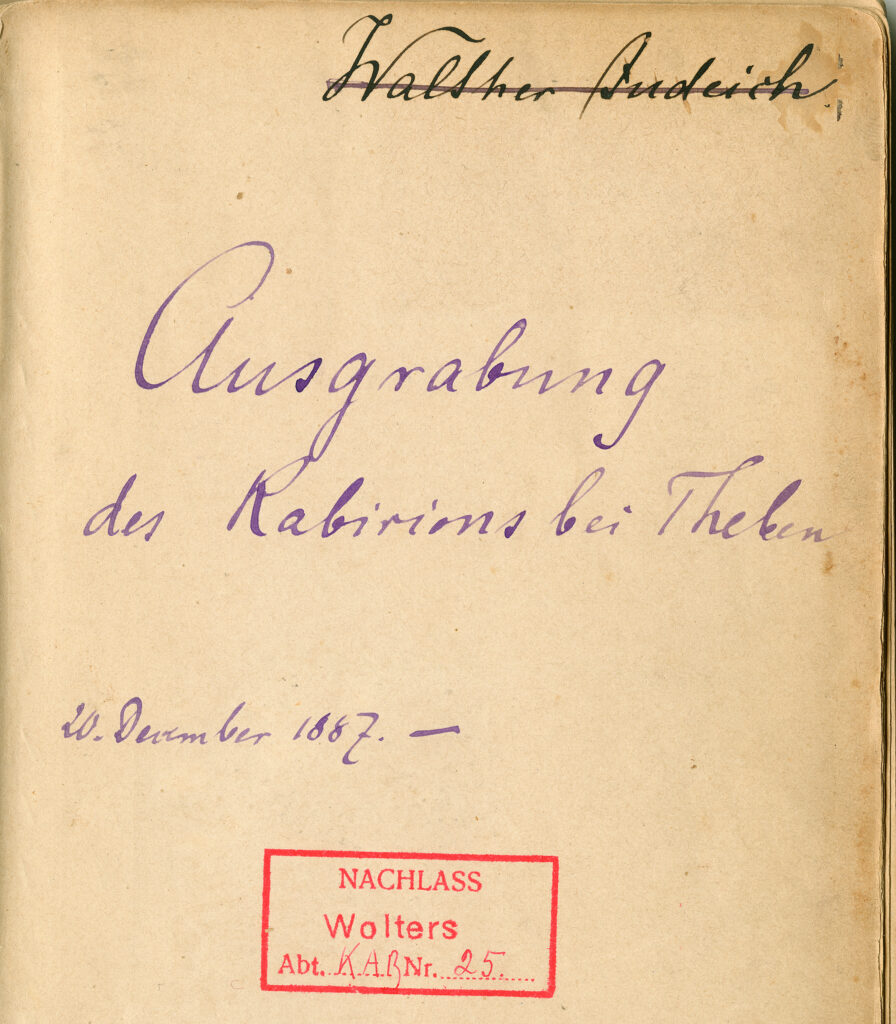
The other notebook, comprising drawings of many objects found, is an aesthetic treasure – simply a delight to look at. Although it is obvious that many items were rather quickly drawn (no wonder given the impressive number of depicted pieces), they show decisive accuracy, and some display the skillfulness, of the persons who drew them. The first example shown here derives from the very first excavation day and portrays several pottery sherds (fig. 2).
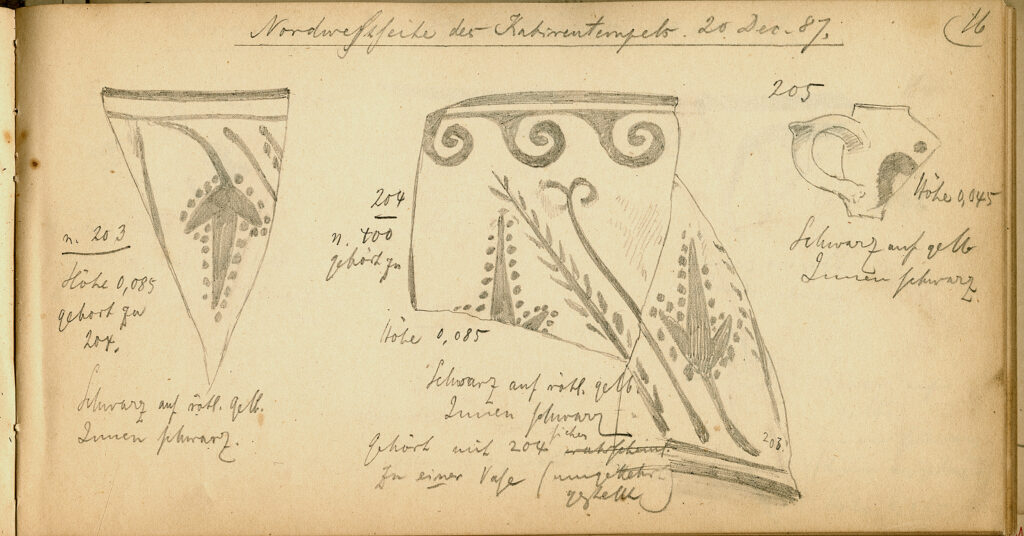
In his account of the history of the early excavations, Paul Wolters (Wolters – Bruns 1940, 2) describes the chaotic scene the young archaeologists encountered at the site due to the aforementioned illegal excavations in the temple proper. During the first week, they basically had to remove the huge amounts of soil thrown-out by the robbers, which contained thousands of mixed-up ancient objects. Wolters cites the journal: only on the first day, 258 painted, c. 300 worthless hardly decorated pottery sherds, about 250 “tear vessels” [i.e. unguentaria], 144 pieces of terracotta figurines, and other objects were found. A photograph, taken a few days later, illustrates this description vividly (fig.3).
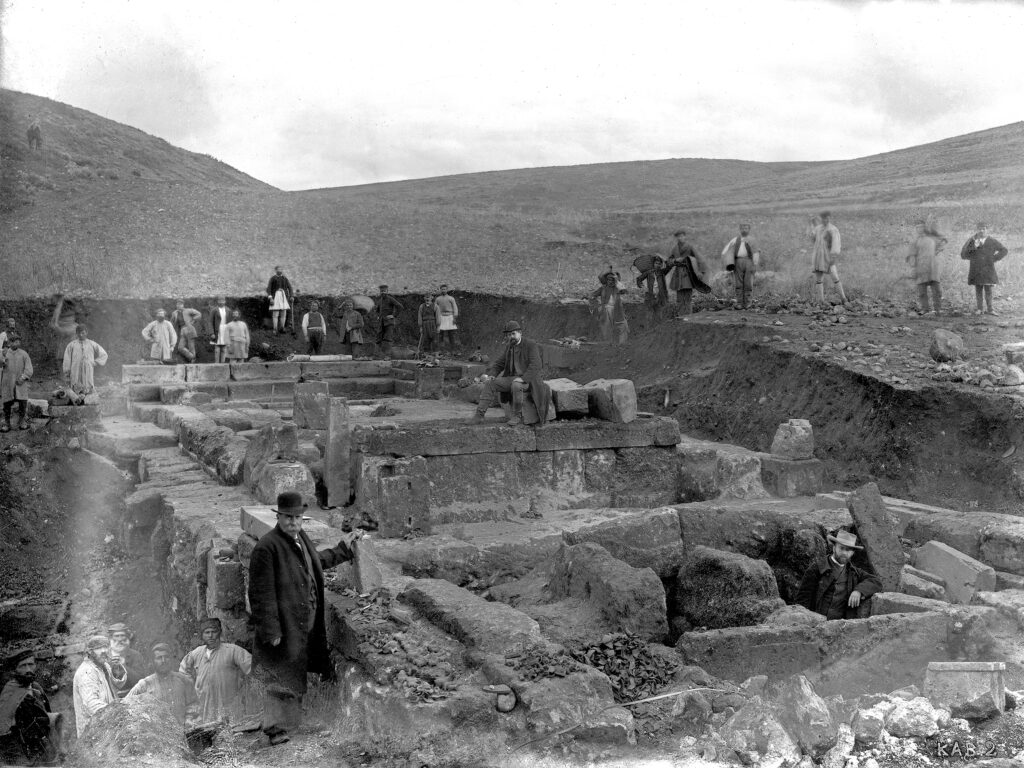
Since the winter days provided only a few hours of light (electricity was not yet used), the archaeologists had opted for accommodation as near to the site as possible. The only available place was an old, very simple Chani (Turkish for resthouse). Wolters description (Wolters –Bruns 1940, 1-2 with fig.) of the primitive conditions is not only illustrated by an image showing the outside of the little stone dwelling published in the book (fig. 4),
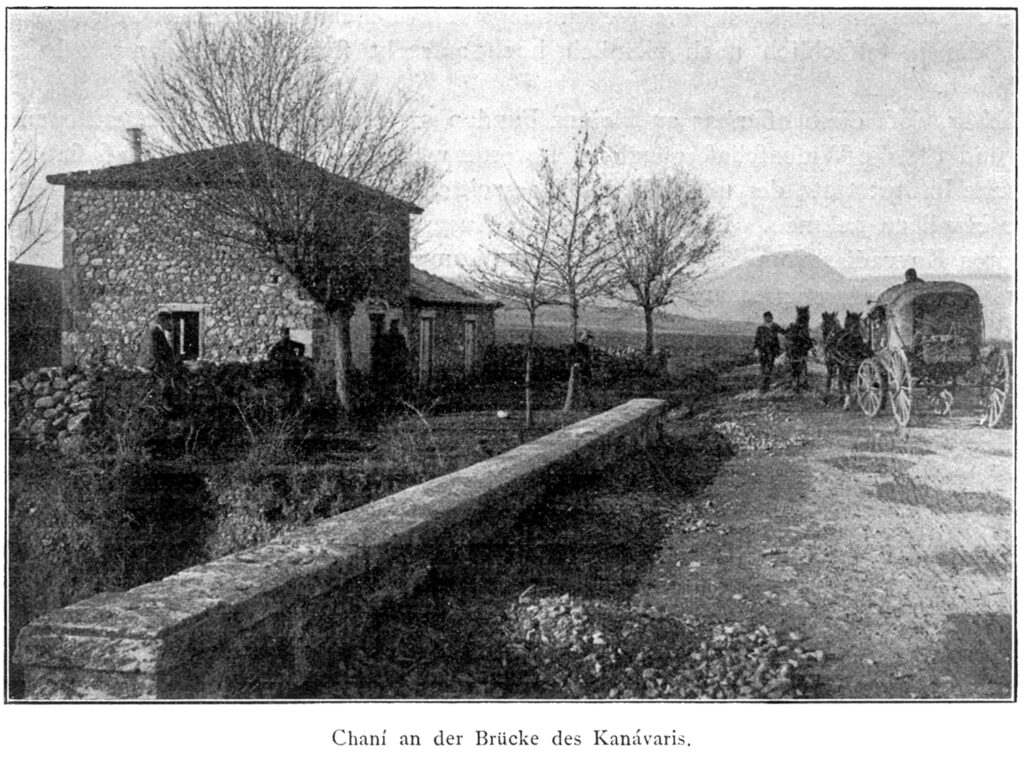
but is also conspicuous in a photograph in Dörpfeld’s private papers in the Archive of the City of Wuppertal (fig. 5). Wolters mentions two small rooms: the one downstairs, i.e. the kitchen, and the living room had an earthen floor, a hearth, a table, and a few low stools, the one upstairs used as a sleeping place was reportedly situated right under the roof, to be reached by a ladder.
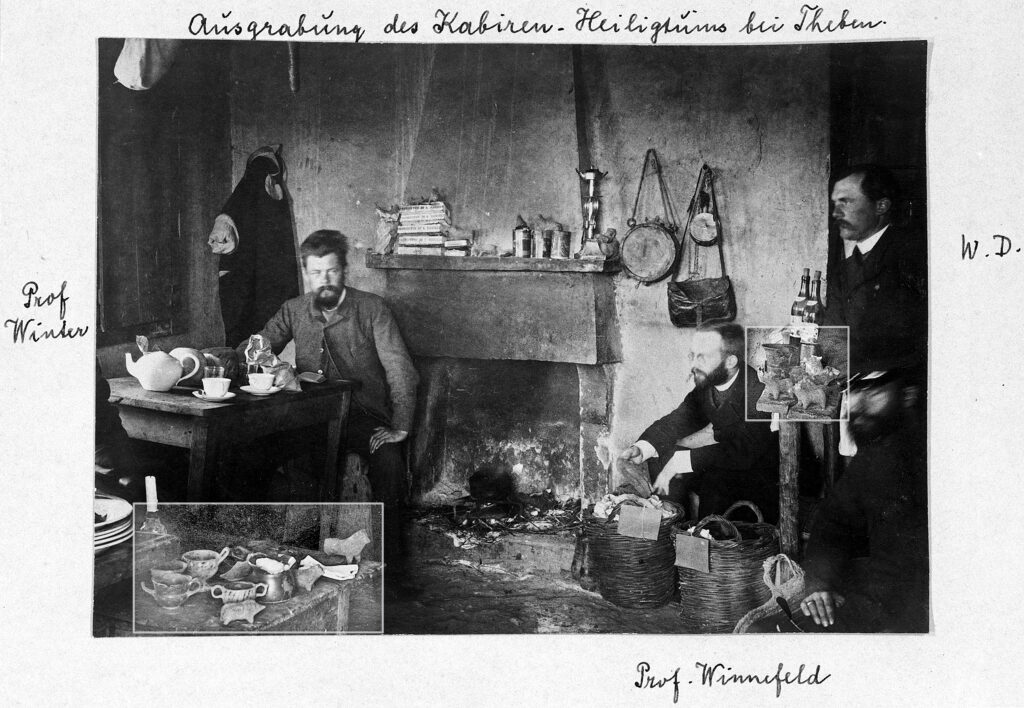
As seen in the picture the archaeologists shared the little existing space with the objects retrieved during the dig. According to Wolters, not even the food supply at the Chani was secured.
On the 24th and 25th of December, western Christmas Eve and Christmas, there was a respite from work. Shortly after, the arrival of colleagues from Athens (Emil Szanto, Hermann Winnefeld, and Wilhelm Dörpfeld) led to changes in the team dealing with the overwhelming amount of finds. The rubbish had finally been removed and a systematic excavation was carried out. Although the temperature dropped around the 3rd of January bringing snow in the night and sometimes rain during the day (fig. 6),
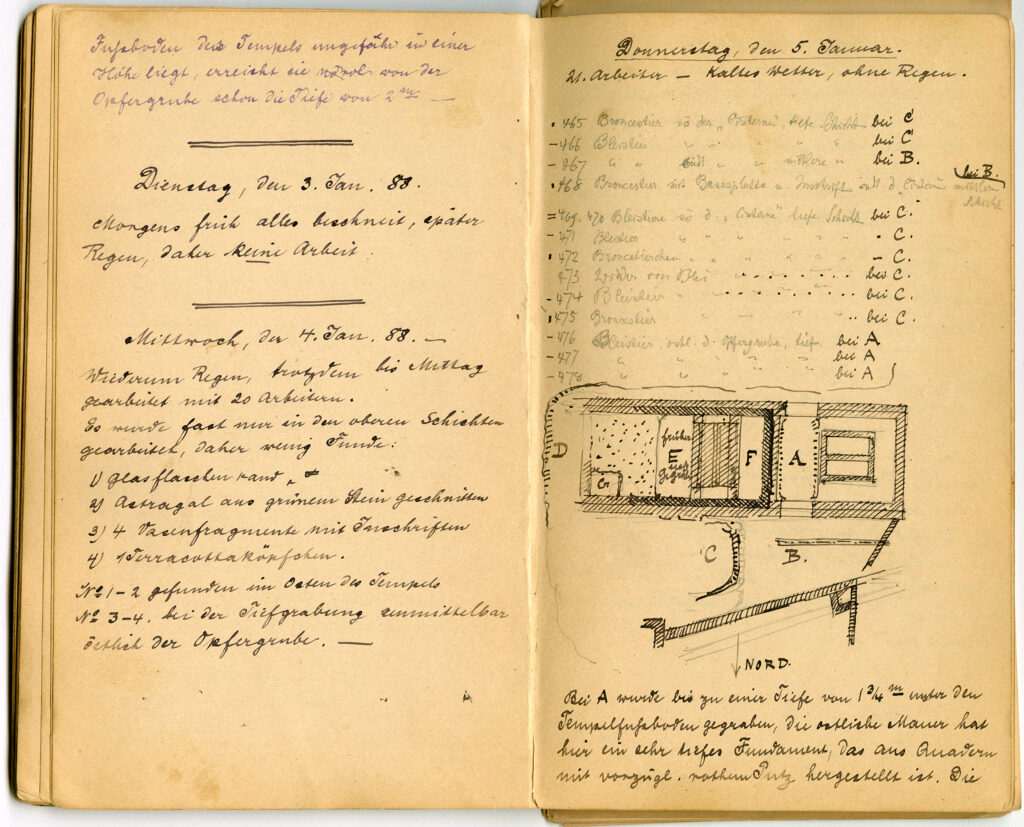
the excavation proceeded until the 12th of January – only interrupted by the Greek Christmas on the 6th of January (Greece followed the old Julian calendar until 1923). However, around the Greek New Year’s Day on January 13th, it started to snow and due to the cold work was impossible (fig. 7).
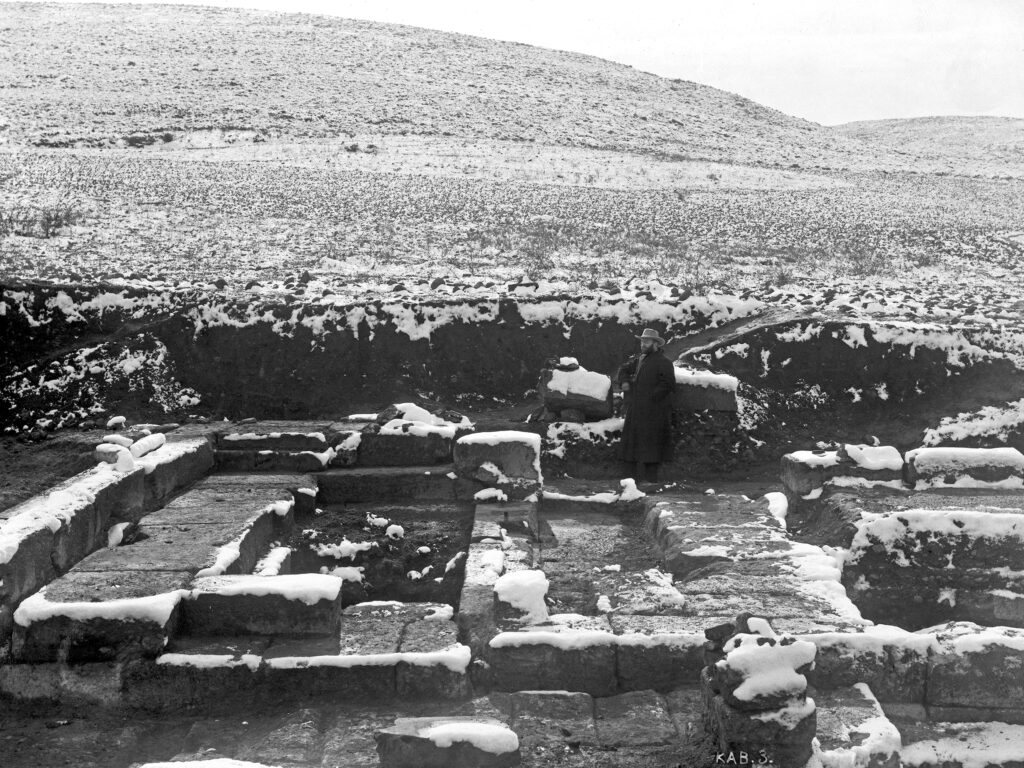
Therefore, the excavation was wrapped up on the 16th of January and the archaeologists headed for Athens. But the adventure was not over yet. Because of heavy snowfall, the usual routes of Oropos or the one across mount Kitharion were not passable. They had to detour via Chalkis and continued on a ship.
In Mid-April 1888 a slightly different team was back at the site for a second campaign, this time for about 10 days. During both campaigns, so much material came to light, that it took Wolters and the team, who had taken on the publication project, many years to record and study the material including extensive photographing around 1891, 1901, 1930, and 1939. Finally, about 1937 the task of publication was bequeathed to Wolters pupil Gerda Bruns (fig.11). She came to Athens to study the material in the National Museum, and although she was aware that more research including another excavation, needed to take place in order to gain a thorough understanding of the site and its stratigraphy, she published the material from the old excavation in 1940 (Wolters – Bruns 1940). The following image shows different phases of documenting: the photograph to the left was taken in 1939, and F. Winter made the drawing to the right probably in 1887 (fig. 8).
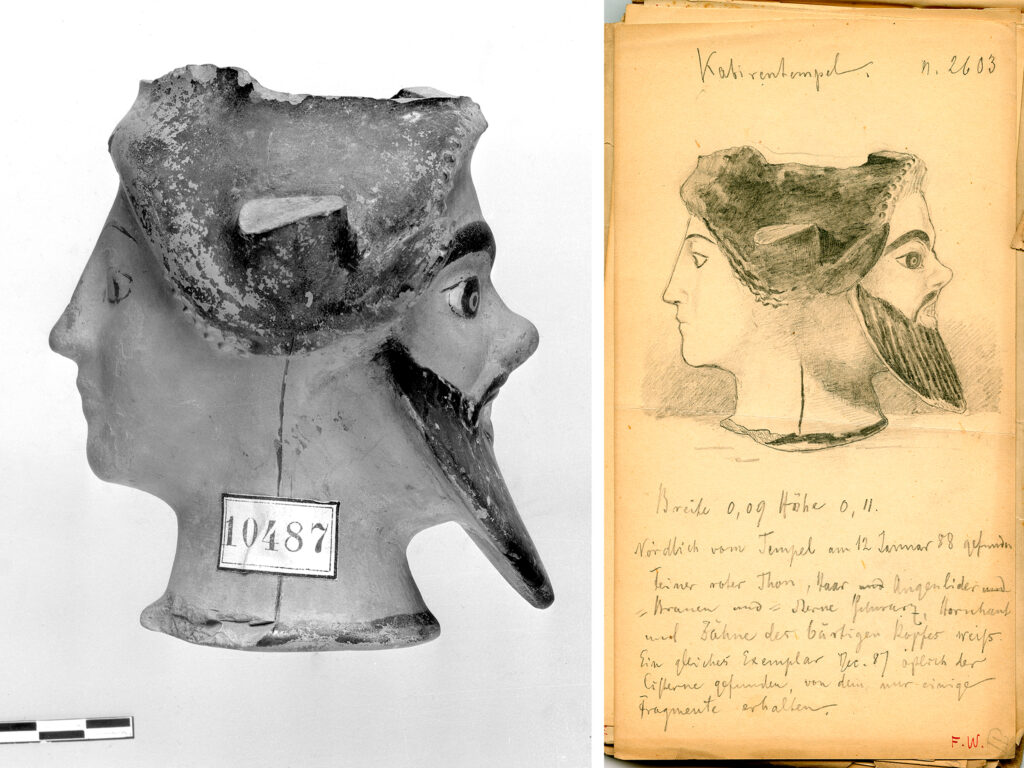
After the Second World War, in 1955 the excavation was resumed with the financial support of the German Research Foundation (DFG) by Gerda Bruns, the first German female archaeologist to undertake an excavation in Greece. It resulted in the uncovering of the extensive sanctuary of the Kabeiroi near Thebes where the mysteries were celebrated. Architectural features include a theatre, a stoa, several circular and apsidal buildings as well as a circuit wall. The architecture and findings were published in the series “Das Kabirenheiligtum bei Theben” comprising six volumes. The original documentation, which over time was dispersed in the hands of various researchers, is today reunited in the archive of the DAI Athens and contains five shelves of notebooks, plans, drawings, negatives, slides, and photographs, all awaiting digitization. The original glass negatives up to 1940 are already available online at https://arachne.dainst.org/search?q=D-DAI-ATH-Kabirion .
The animal figurines found by the thousands had not been included in the 1940s publication and went through the hands of many researchers until Bernhard Schmaltz published them in 1974 and 1980. A witness to the process of their documentation and study are index cards for each object recording inventory-no., drawing, photograph, remarks about style, similarities, and further details (fig. 9).
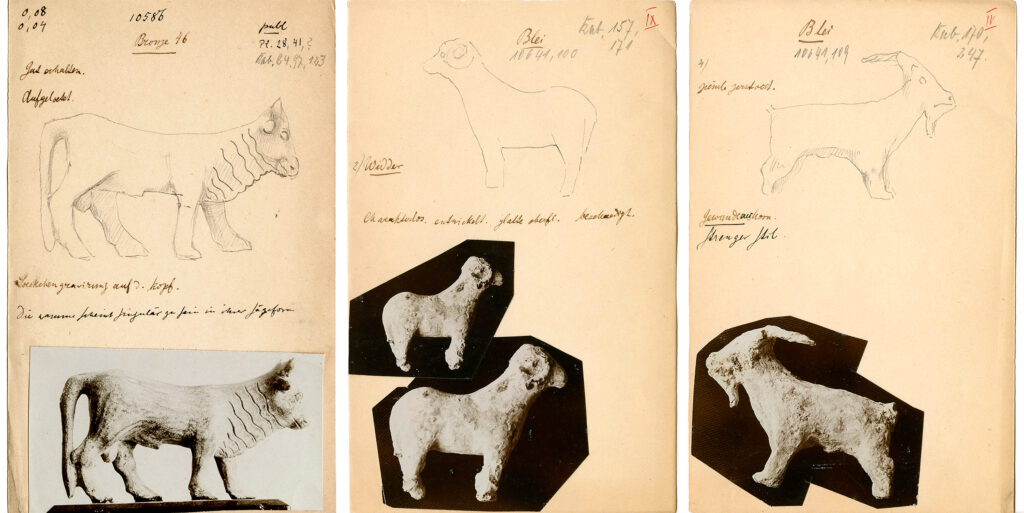
In the 1980s a copy of the field notes (“Beobachtungsbücher”) of the excavations from 1956–1969 was recorded on “document films” to secure the original data for the future (fig.10).
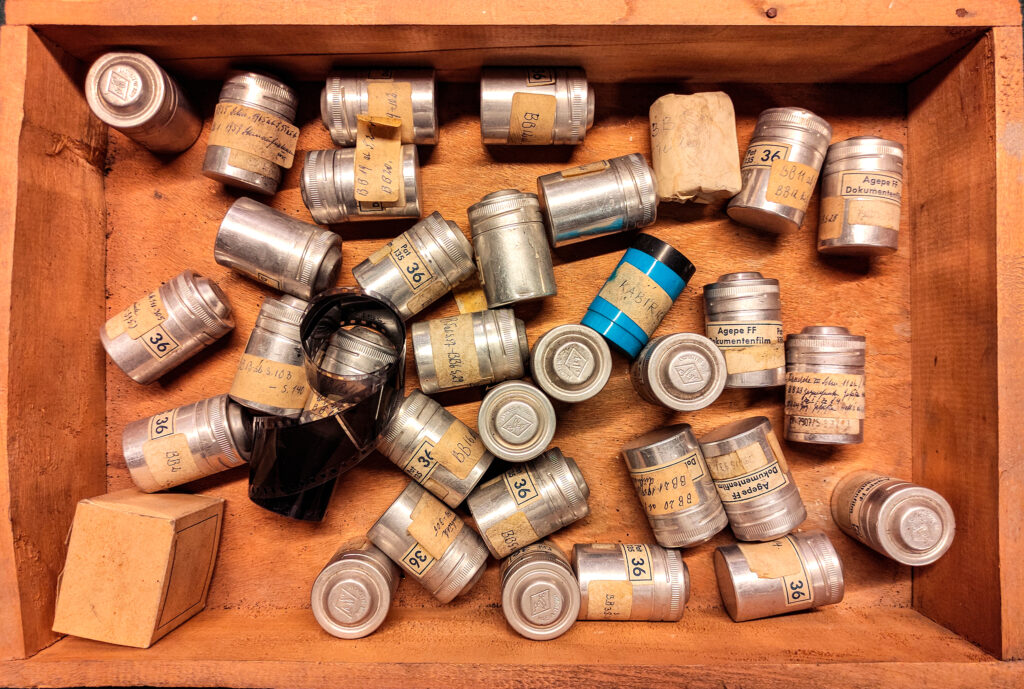
Likewise kept in our archive are several reports on the 1956–1969 excavation in Greek newspapers, such as the one shown below with a rare picture of Gerda Bruns (fig. 11), who spent many years of her life excavating the sanctuary – an adventure in itself.
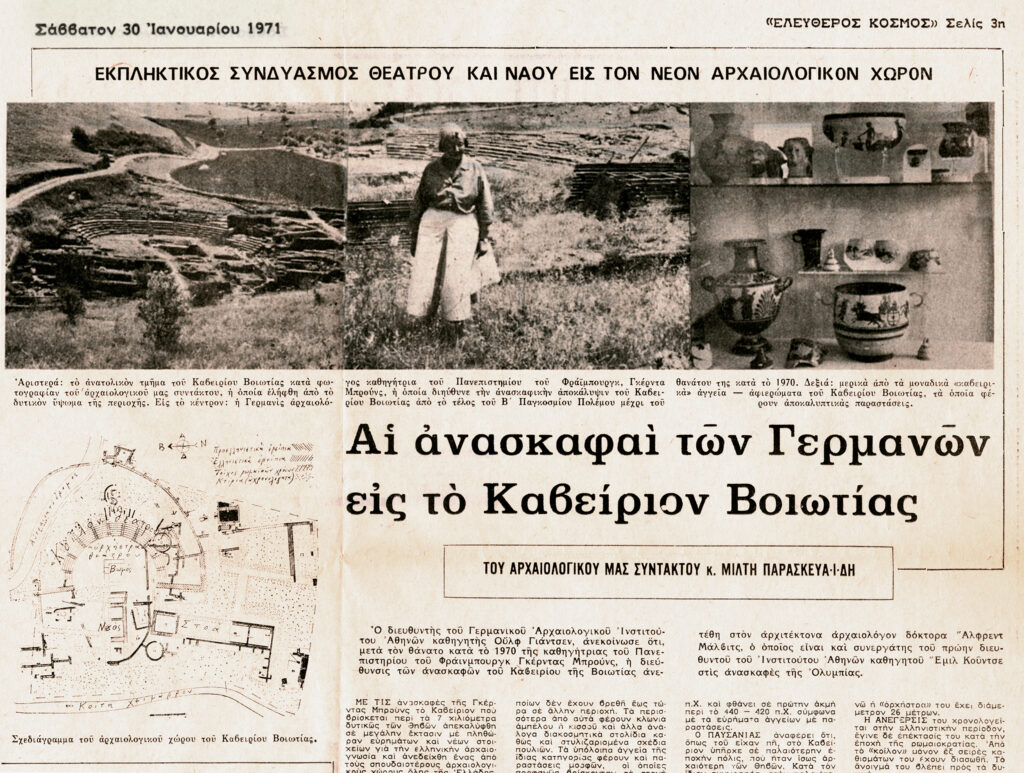
Works cited and further reading:
Braun – Haevernick 1981
K. Braun – Th. E. Haevernick, Bemalte Keramik und Glas aus dem Kabirenheiligtum bei Theben, Das Kabirenheiligtum bei Theben 4 (Berlin 1981)
Heimberg 1982
U. Heimberg, Die Keramik des Kabirions, Das Kabirenheiligtum bei Theben 3 (Berlin 1982)
Wolters – Bruns 1940
P. Wolters – G. Bruns, Das Kabirenheiligtum bei Theben. Das Kabirenheiligtum bei Theben 1, (Berlin 1940)
